 Shop
ShopBroad-Spectrum CBD Softgels
Broad-Spectrum CBD Oil Tincture
Full-Spectrum CBD Softgels
Full-Spectrum CBD Oil Tincture
CBD Gummies
CBD Balm
CBD Dog Treats
All Products >
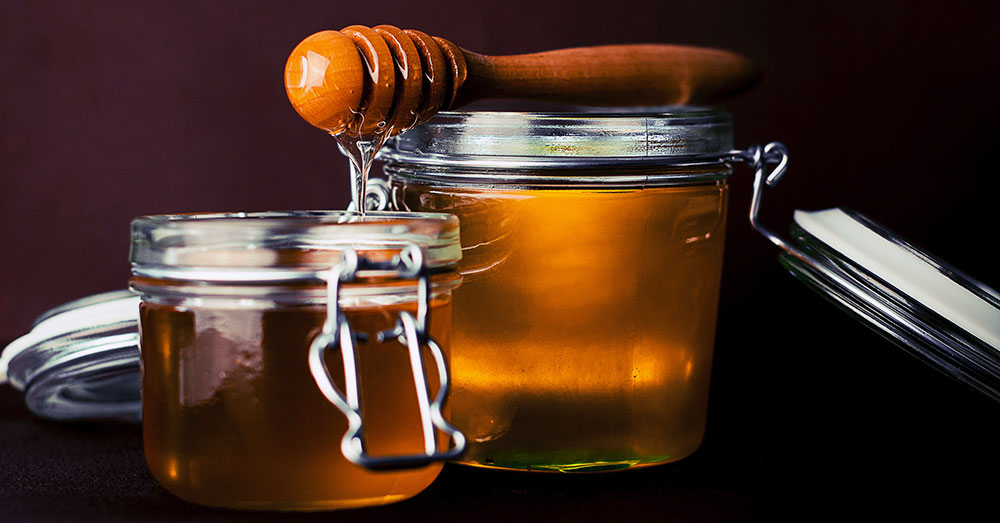
Infused CBD products are one of the most popular and trendy ways to access the benefit-packed, hemp-derived compound. Variety is the name of the game and these products come in a wide range of forms including chocolates, gummies, cookies, and more.
Among the wide range of infused options, honey is one of the most versatile. Honey can be consumed directly or added to other end products like coffee or tea. If you do any research on pre-packaged CBD honey, you'll quickly find that most of the products out there are quite pricey and the quality, purity, and contents of the included hemp content are often hard to verify.
In this article, we walk you through how to take your favorite honey and infuse it with CBD. You'll end up with a highly effective, high-value infusion that you have complete control over.
This entire process is fairly simple so most of the tools you need will likely already be in your kitchen:
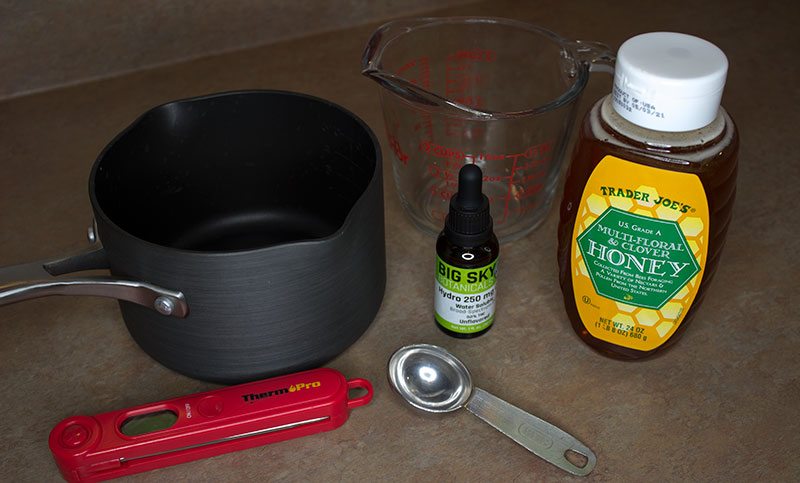
Before we start, we need to do some basic math to determine the potency of the end product and how much CBD will be required.
In this example, we use Trader Joe's 24oz (680g) Multi-Floral & Clover Honey. Looking at the nutrition facts we find that a serving is 1 Tbsp (21g) and there are roughly 32 servings in the bottle. The Hydro tincture that we will be mixing with the honey comes in a 1 oz (30ml) bottle containing 250mg of CBD in total.

By simply dividing our total CBD content (250mg) by our 32 servings of honey, we find that each serving will contain 7.8 mg of CBD.
While this is just slightly less than the 8.33 mg of CBD content in a 30 serving Hydro tincture, 7.8 mg is still a sufficient dose. This simple calculation can be adjusted up or down depending on your target potency and honey content.
With our target potency in mind, it's time to start mixing!
In order to maintain the total volume of the honey and preserve the 32 serving size, we need to first remove the volume of the Hydro tincture in honey. Since determining and then removing the exact volume of honey is difficult, we just eyeballed the approximate volume of the tincture which was roughly two tablespoons of honey.
If you're using an isolate blended in a small amount of carrier oil or concentrated extract, you won't need to remove much of the honey at all.
Next, we need to mix the tincture in with the honey. In order to accomplish this, we will use a simple double boiler to heat the honey and Hydro infusion. The heat loosens up the honey, making it much easier to mix the two ingredients together.
Honey is a health-packed substance that is also sensitive to heat. Overheating honey can potentially ruin the many benefits. Honey has even been observed in the Ayurvedic community to create toxins when exposed to high heat. Do not use the microwave honey or overheat at any point!
Luckily, nature provides a great reference point for this heating process. Bees keep their hives at precisely 95 degrees Farenheight for honey production. We can safely assume then that heating honey to this temperature is totally safe.
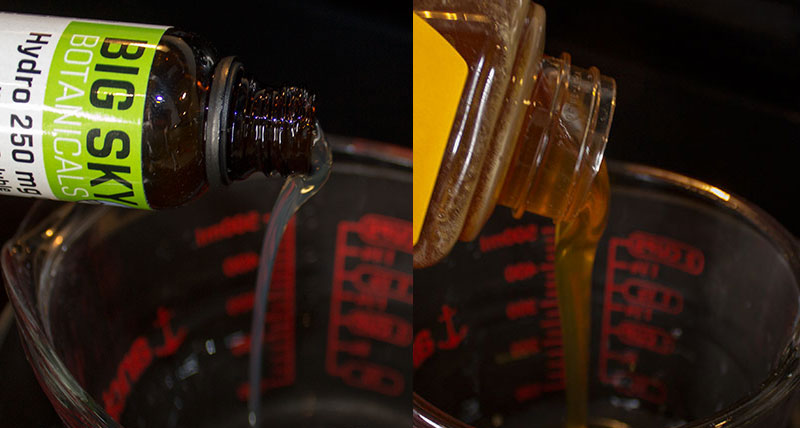
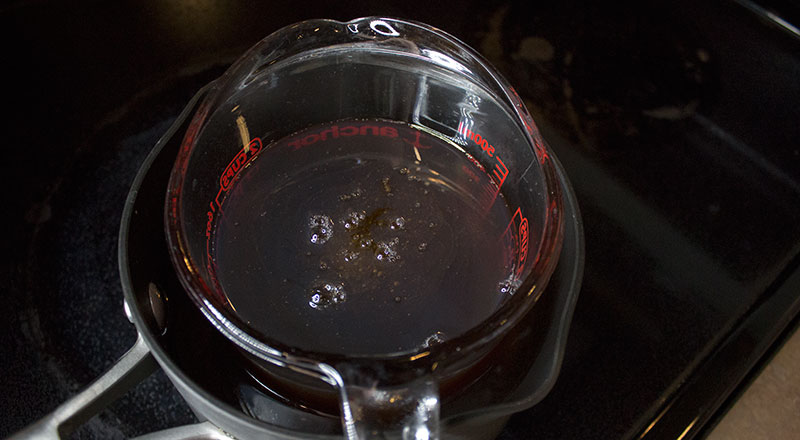
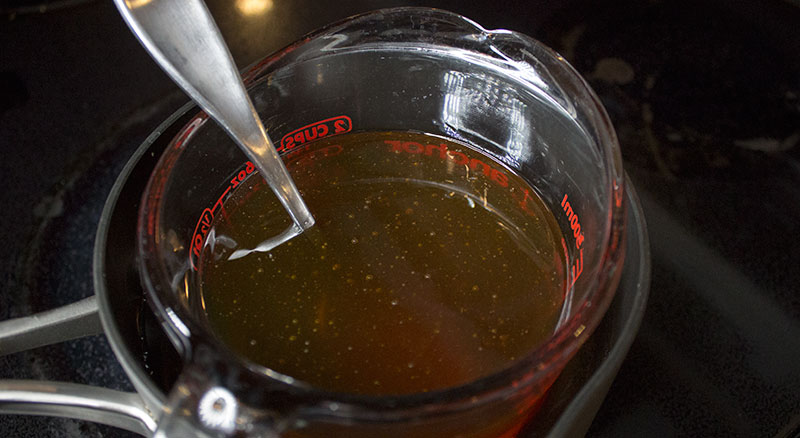
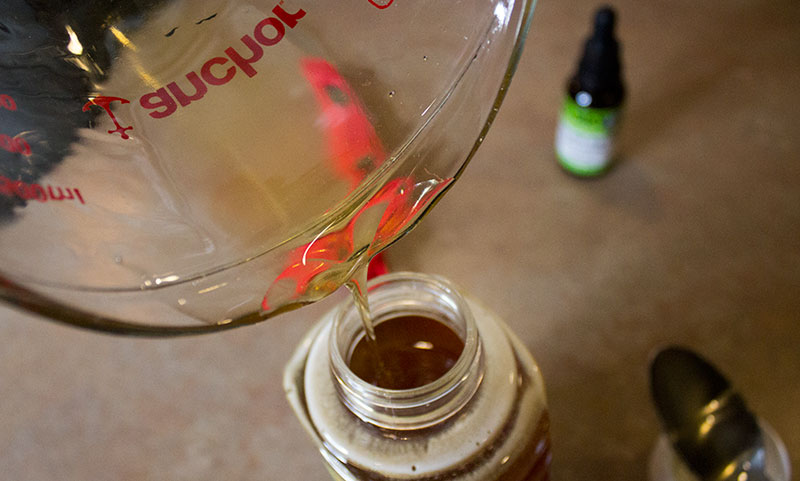
You can store the mixture in the cabinet just as you would any other bottle of honey. Separation shouldn't be an issue, but to be safe you can flip the bottle over a few times to mix the honey up to ensure that the CBD is dispersed evenly before use.
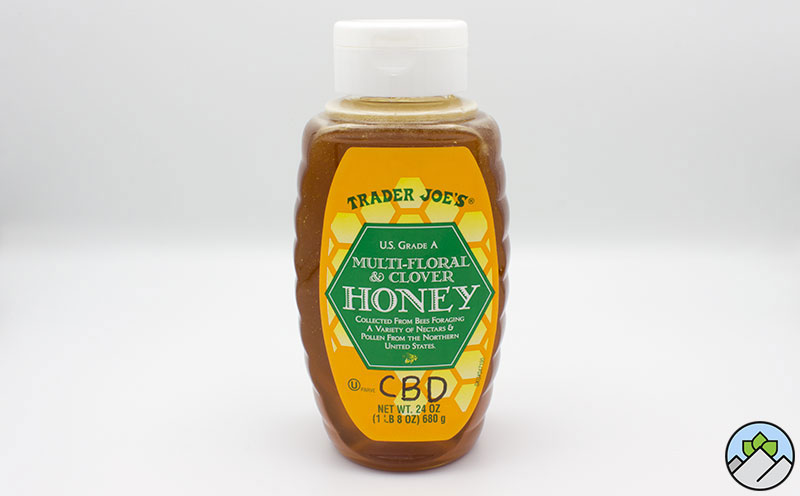
Unlike the Hydro approach, when using CBD isolate or a concentrated CBD extract we first need to create a minimal oil-based CBD mixture and then combine it with the honey using very low heat.
CBD naturally takes a crystalline form and using a small amount of carrier oil allows the molecule to bond to the oil and prevents re-crystallization in the honey. To create this oil, we need to heat CBD isolate or a full-spectrum extract together with a small amount of MCT oil.

CBD Isolate Dissolved in MCT Oil
Now that you've prepared the CBD content, simply head back up to step 2 and continue along mixing this newly created oil infusion with the honey.
Enjoy your CBD-infused honey and leave any questions or comments below!
I am trying to mix CBD Distillate with Royal Honey and there are a lot of thick bubbles at the top when put in jars. The bubbles don't dissipate and appear to thicken. Any ideas? Thanks.
I'm a beekeeper in Pennsylvania. I'd like to infuse CBD into my honey and sell it.
Can you supply me with hydro-soluble CBD that doesn't require heating the CBD with oil (which is confusing)?
Thanks, Art Howe
Hello Arthur - our hydro CBD doesn't need to be heated. It only makes mixing the two ingredients together easier. Hope this helps!
Anybody ever try to add CBD into kombucha or other carbonated beverage?
Hi - My isolate clumped up and didn't dissolve into powder when I put it in oil (1/8 tsp for 1 tsp isolate. I think it's an isolmalt formulation. Should that still dissolve? Do I need more oil?
I am not familiar with isomalt formulations, so I can't say if it will mix into the oil. Your ratio does seem light on oil, so there shouldn't be any harm in trying. If not, try normal isolate or our Hydro tincture makes things even easier and provides additional benefits over an isolate. Let us know how it goes!
Hey Raymond,
You're not crazy - you make some good points here. I've removed the oz to tablespoon reference. As you point out it's inaccurate. This guide is designed to cover the general topic for consumers, not a specific, scientific approach that might be used by a manufacturer. Since the variance in the volume of an isolate mixed in a tiny amount of carrier oil is much different than a tincture like the hydro we use in this example, then this general approach is preferred over an exact gram-for-gram recipe which won't convert depending on your CBD source.
Thanks for your comment and I hope this helps explain our approach here!
You state that the honey may crystalize as a result of the process. Does this occur short-term, like in a couple of days or long-term after 3-6 months? Couldn't you just warm the CBD honey via a pot of water on the stove to un-crystalize as you do with regular honey?
Hey Scooter - if the honey does crystallize, it should be over longer periods of time (months). This crystallization shouldn't hurt the honey or CBD, you just warm and mix it back up as you do with normal honey just like you mention!
Hey Michael - you're absolutely right and we've updated (and simplified!) the calculations in the article. Thanks for catching this and letting us know!
Hey Casey,
The volume of honey plays a role in this and it will be vary depending on your desired potency. See the section in the article 'Determining Potency' for to help determine how much CBD extract (oil or isolate) you'd like in the end product.
Hello! Do you recommend using cbd isolate or cbd tincture?
Hey Rick - we always recommend either full or broad-spectrum extracts as they take advantage of the entourage effect which we talk more about here: https://bigskybotanicals.com/blog/what-is-the-entourage-effect/
Do you think I can I use just coconut oil instead of MCT oil?
Hey Shelby - I think that would be absolutely fine!
I’m trying with a full spectrum cbd distillate. It’s very thick liquid, can be “dabbed”.
I wish to add some everclear to make it a liquid, and then add to honey to make a blend.
Do I need to decarb CBD distillate to make it more active, like THC, and by active I mean a more potent amount of converted CBD, non psychoactive medicine?
Or can I just take it once I have used the everclear to make quiquid and just add that, and I’m done?
First I'd double check that the distillate that you have isn't already decarboxylated - unless it specifies that it is raw, many distillates have already been heated. Check the lab reports to confirm.
If it isn't already activated, then I suggest decarbing it independently, then adding it to the alcohol and combining with the honey. This is because the decarb temps (220-240f) aren't good for the honey. More info on decarbing here.
There are also unique advantages to raw cannabinoids that you could consider. You could make a 'raw' cannabinoid honey, a decarbed honey, or a blend since you have the options. Check out our cannabis compounds article which outlines all the properties of the individual cannabinoids, raw and heated.
I love your recipe, however I’m having trouble getting the math to add up. There are 6 tsp in an oz, if we are using 24 oz of honey and 6x24= 144 tsp in 24 oz. Then if you use 1,000 mg CBD it comes in at just under 7 mg per tsp.
Hey Rachel - You're absolutely right and we fixed the calculation error and updated the article to reflect the correct math. Since we are actually getting a tiny bit less CBD per serving, I guess we will have to just add a little more honey - thanks for pointing this out!
Hi! Is honey considered an emulsifier? Before I read your article, I added a few drops of tincture oil to a glass of lemonade with honey already mixed in. It seemed like everything blended pretty well. I love your recipe and plan to try it soon.
Thanks, Sharon
Hey Sharon,
When using an oil-based CBD with honey, it could be considered a natural emulsifier. I'd imagine when dissolved in water, the honey would loose some of the emulsification properties though. That being said it sounds like you're having good luck with it. It may be that if you let the lemonade in your example settle, that the oil may then separate. We worry that the separated oil may stick to the side of the glass, resulting in a loss of potency. This is why we recommend the hydro which disperses throughout the liquid.
Hope that helps!
Steve, most oils out there are going to be in tincture form which is a combination of hemp oil extract and MCT or a similar oil carrier. For making an infused honey, your best bet would be to use a CBD-rich extract that has not been cut with another oil already. This way you minimize the amount of oil you're adding to the honey and keep it from getting too runny - these products most often come in a blunt nose syringe. A good example is Endoca - they sell a decarboxylated CBD extract simply called 'Hemp Oil' that would be a great choice.
Hey Bob,
1. Assuming you use the minimum amount of oil + isolate or distillate required, the honey remains very similar to its original consistency.
2. The CBD may settle over an unknown amount of time. Mixing before every use is a good idea.
3. Not sure I understand what you mean by 'creamed' honey. The mixture doesn't get cloudy if that's what your asking.
4. Check for independent lab reports for the products you're buying.